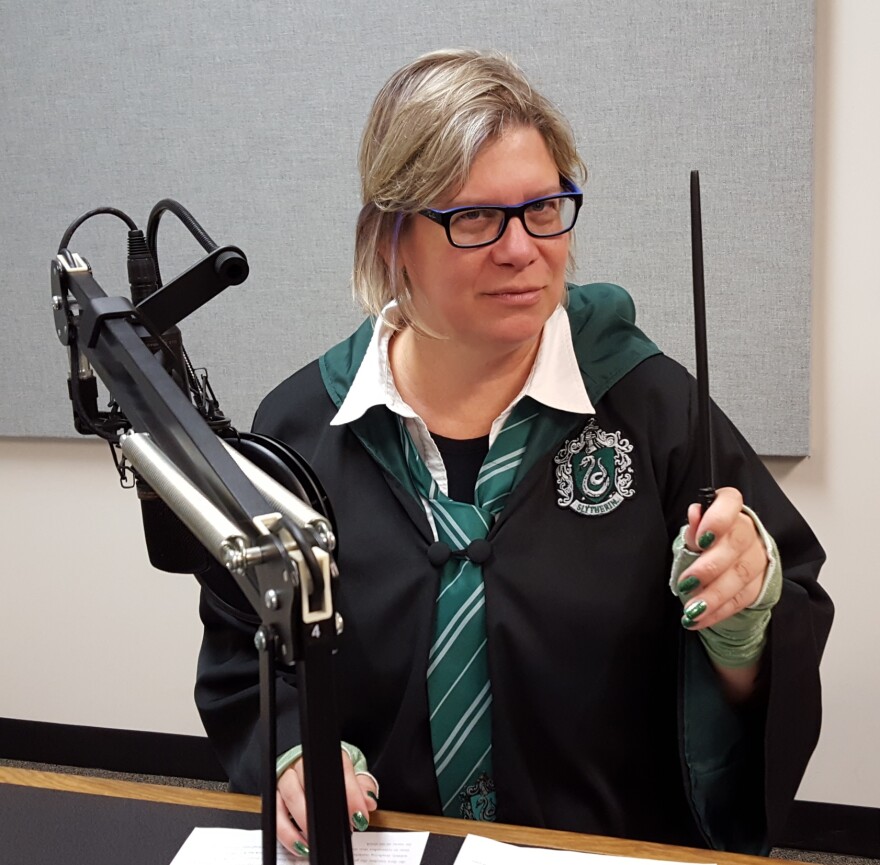I love Halloween. For as long as I can remember, I have loved reading horror novels, watching slasher films, dressing up in costumes where no one knows who I am, and being scared about what's around the corner in the haunted house. I couldn't wait to trick or treat and attend Halloween parties.
As I grew older, I saw Halloween in its role as celebrating the end of the harvest and the start of winter. I learned that the origins of Halloween come from a Gaelic celebration known as Samhain which took place from sunset October 31 to sunset November 1. It was a time when livestock were brought in and some slaughtered for the winter; fruits and vegetables harvested and stored. The souls of the dead revisited homes, offerings were made, feasts prepared, and people went door to door in costume exchanging verses for food.
Samhain was a time to start to prepare for winter. A time when the boundaries between the living and the dead were more easily crossed. It was a time of community, ritual, and preparation. As I celebrate October and Halloween, the rituals and traditions of Samhain are more important and more apparent. They are the traditions I incorporate into my life.
Every October, my friend Erin and I travel down dark, rural roads following the Harvest Moon and making sure to avoid deer and critters on our way to visit haunted houses. As we drive back roads through Bushnell and Good Hope and Mount Pleasant we watch combines harvesting; a sign of the end of the season. We visit haunted houses in abandoned barns, old schools, long-forgotten factories and farm trails. The haunted houses we go through, most created as fundraisers for various community organizations, are put on by people who care about their farms and towns and come together to celebrate the American tradition of horror—the blurring of the lines between the living and dead.
Venturing to these farms and communities makes Halloween even more important to me. As we wait in line or visit with the people who construct the haunted attractions we learn of the ways in which they come together, celebrating their communities and creating one last festival before winter sets upon us. We think of the ways in which the spirits of the dead continue as part of the tradition we have created.
If I’m lucky, I spend Halloween on my porch, watching the neighborhood children come by, asking for candy or other treats, some years already wrapped in coats trying to squeeze out the last of the fall. Other years the fur-lined costumes are traded in for t-shirts as the last days of jacketless weather align with the festivities.
I attend costume parades at Lincoln and Edison. I listen to the Halloween Concert at WIU. I watch my children get older, spending their Halloween evening with friends, running through the neighborhood and bringing back their spoils. Halloween represents a tradition of community coming together, where porch lights remain on and the practice of gift giving continues through chocolate and gummy candy.
The end of October signals the time to prepare for winter. There are pumpkins and root vegetables making their way into soups. Chili suppers and pie day, canning fruits and vegetables with hearty foods that are made to last all of which represent the ways in which we settle into winter. We gather together, comforting friends and family as we plan for celebrating the end of one year and the start of the next.
I see Halloween and the end of October as time to celebrate those we have lost. Through haunted houses, moon-lit roads, and costumed ghosts, we see those spirits as they turn the corners in front of us, just a little too quick to catch.
This year we buried my uncle: my mom’s brother. We have already buried her sister as well as my dad and all his brothers and sisters. As I sit on my porch, each day spending a little less time, wrapped up in another layer; the wind blows through our cobwebs, wrapped around the pillars. It is in these moments, when another layer is enough to stay outside a little longer, that I listen to those who have passed on. They share their wisdom and help to prepare for the days ahead.
As the Midwest harvest ends and November is upon us, the leaves fall from the trees and as they die they insulate the ground, preparing it for the first frost. As we prepare to hunker down for winter, readying ourselves for a new year and new beginnings, I look back to Halloween as a time to remember that the connections between the living and the dead may not always be as far away as we think.
Rebekah Buchanan is an Associate Professor of English at Western Illinois University.
The opinions expressed are not necessarily those of the University or Tri States Public Radio. Diverse viewpoints are welcome and encouraged.





